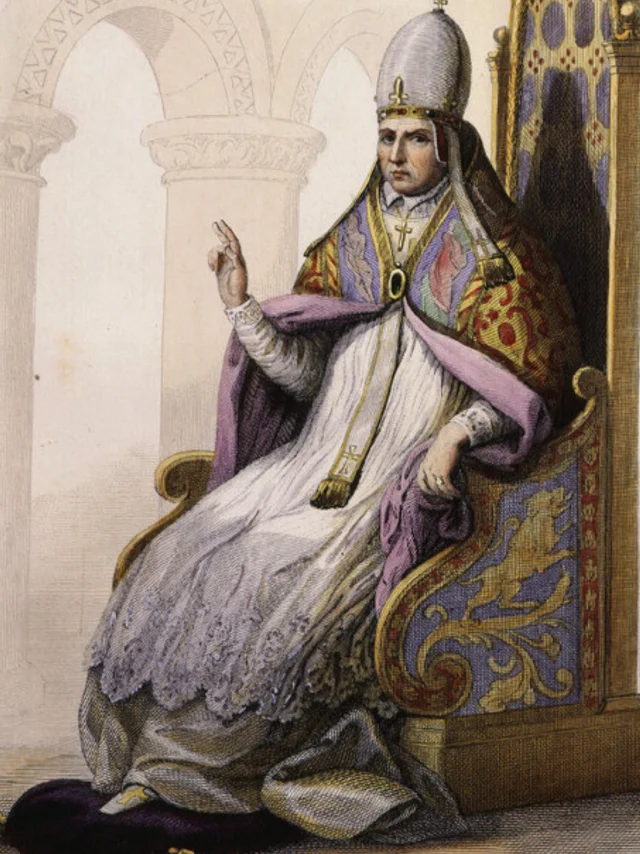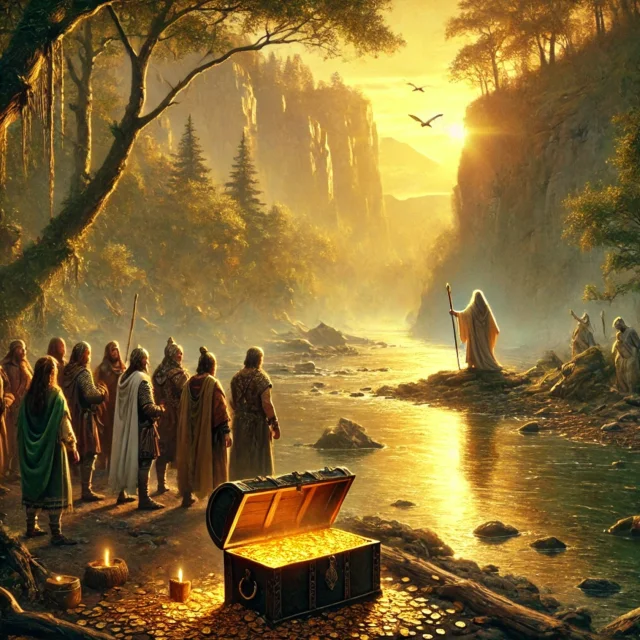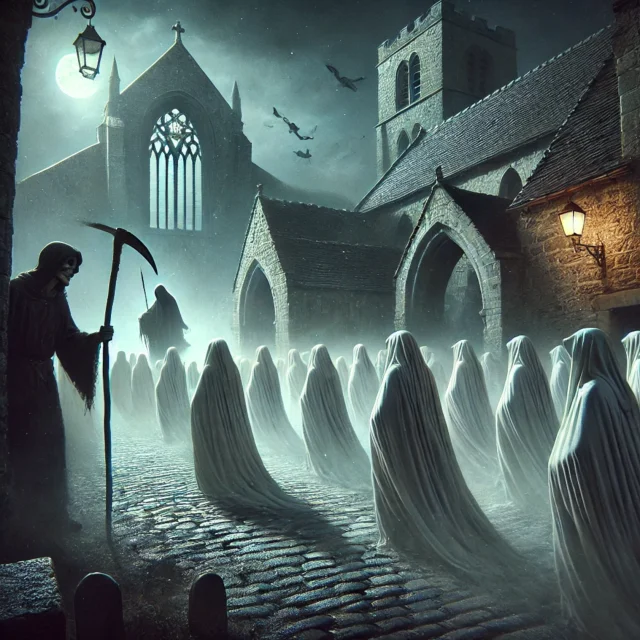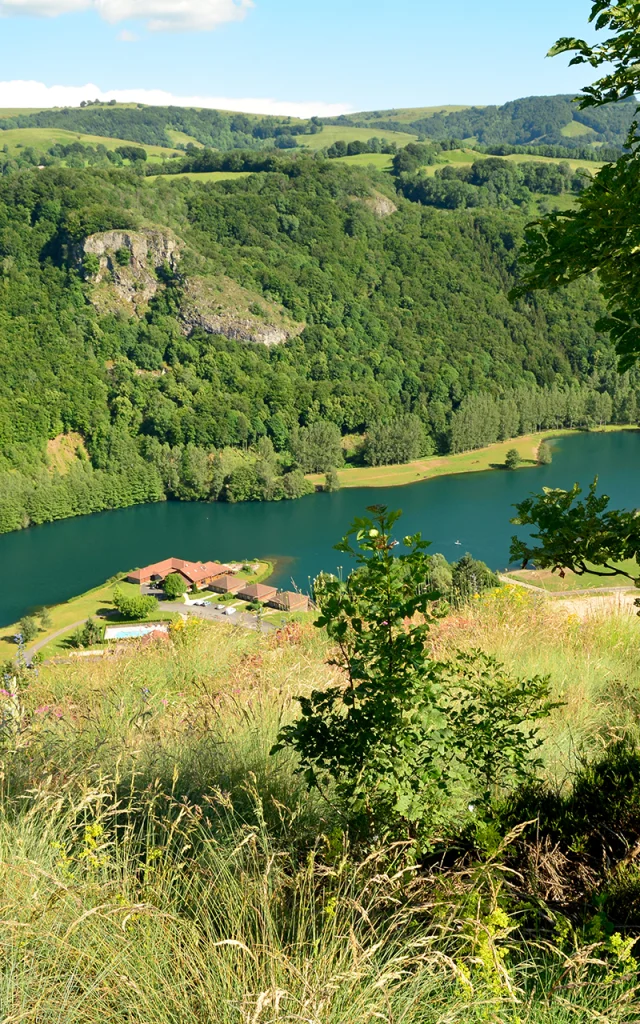The legend of the Aurillac gold flakes
Gerbert, a skilled sorcerer, was still living at the abbey of Saint-Géraud when one day he went to Belliac, accompanied by the dean of the monastery, whom he hoped to convert to paganism. They stayed together for several hours in their father’s thatched cottage, which later became known as the Pope’s house, because it was there that Gerbert, later known as Sylvester II, was born. Their voices echoed for a long time in the little cottage. Finally, unable to convince the worthy man with his arguments, Gerbert offered to witness a miracle. The dean accepted, even though he knew he risked losing his soul, and followed Gerbert to the nearby riverbank. After drawing circles and uttering many cabalistic words, the young necromancer struck the water of the Jordanne with a wand whose tip flickered like a flame. At that instant, the waters, clear and peaceful, suddenly changed into a golden river, which flowed between the two banks as if molten from a furnace. Terrified, the dean fell to his knees, inwardly praying to God, and the spell was broken. Since that day, the Jordanne has continued to bear golden flakes, and the town took the name Aurillac, derived from Auri lacus, the golden lake.

The legend of the cursed pact
Later, Gerbert, driven by a burning desire to become pope, made a definitive pact with the forces of hell. However, before sealing his fate irrevocably, this cunning archbishop sought to circumvent the devil thanks to his erudition in the occult sciences. Indeed, he made an ambiguous promise, hoping to deceive the devil. But the angel of evil, wiser than he, had anticipated his ruse.
According to the terms of the pact, Sylvester II was to live as long as he did not say mass in Jerusalem. But he forgot that in Rome there was a church bearing that name. One Sunday, he celebrated mass there, unaware that he was sealing his fate. When a sudden illness struck him and the fatal error was revealed, the pope was overcome by terror. He, so powerful, trembled like a tree under the onslaught of a storm.
In a moment of despair, he repented, beat his chest and begged divine forgiveness. But the days of grace were over. God looked away, and Satan demanded his due. And so Gerbert died.
He was buried not in a church, but under the portico of St. John Lateran. But his punishment did not end there. The devil, master of his fate, wanted his insatiable thirst for predicting the future to continue even in death. According to a dark curse, the black slab of his tomb, although sheltered in a dry place, had to become damp two weeks before the death of each pope.
One day, a seriously ill pontiff, informed that the stone of Sylvester II’s tomb was oozing, ordered his body exhumed and his ashes scattered. When the tomb was opened, Gerbert was found intact: his body seemed rejuvenated, his eyes wide open, and his mouth ready to speak. But the moment the light entered the grave, a cloud of sulfur burst forth, enveloping the corpse. The body immediately crumbled to dust, and a few minutes later, not a trace of him remained.
 Sylvester II
Sylvester II












